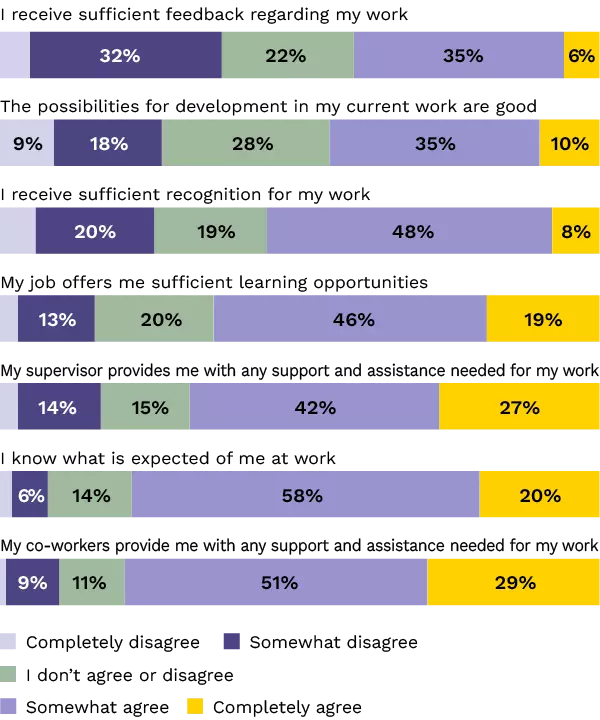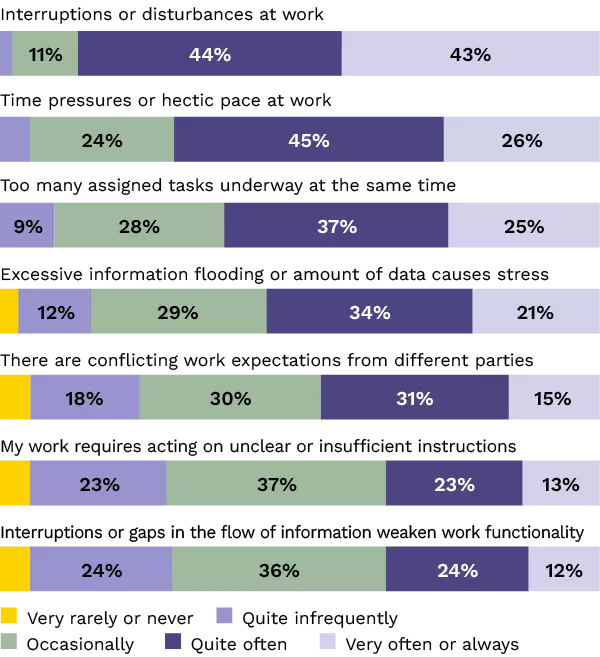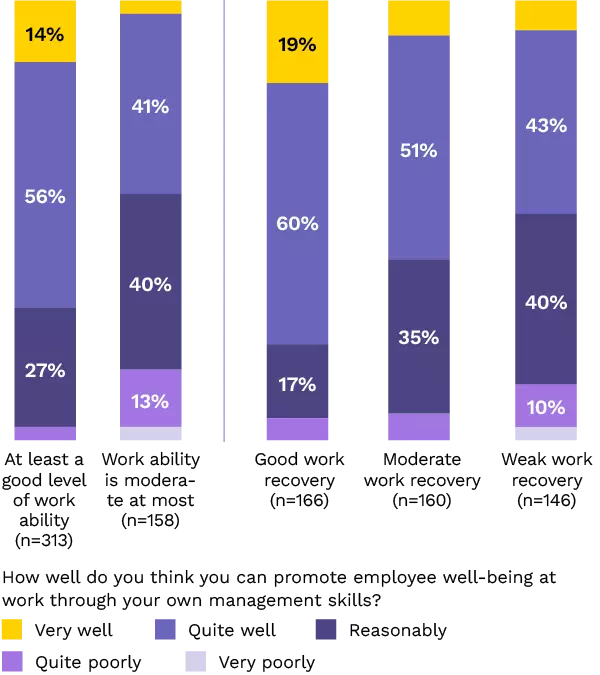Supervisory work is independent, and job descriptions are often broad. In today's work environment, hybrid work and change management are emphasized.
Supervisors and managers often have quite a broad job description. The work is usually largely independent and self-directed. Tasks involve people management, administrative duties, decision-making, organizational development, and operational planning. Alongside the actual management duties, the job often involves participation in other expert or customer work, as well as ensuring employee well-being and safety.
Changes in the work environment, such as increasing efficiency and learning requirements, increased cognitive workload, the prevalence of multi-location work, and expectations for employee self-direction, are also reflected in supervisors' daily lives.
Professional specificity in the supervisory work
The share of functional supervisor roles has increased. In this role, there are no formal subordinates, but supervisory tasks
Source: Statistics Finland, Working Conditions Survey 2024

Typical load factors in supervisory work
Key resources in supervisory work
Work interruptions, urgency, and overlapping tasks are typical stress factors in supervisor work

Supervisory work offers plenty of resources to counterbalance work load

Phenomena and trends
Change trends in working life include the advancement of digitalisation, the increasing amount of knowledge work, the increasing prevalence of multi-location work, the emphasis on self-direction and the increase in the importance of individualised leadership. Changes in working life are reflected in different ways in supervisory work and the leadership approach of supervisors.
The importance of human-centered leadership is growing
Servant leadership is understood as one of the most suitable leadership methods of today's work environment. An increasing number of studies show that servant leadership is associated with work engagement, i.e., positive emotional and motivational states at work, trust, work performance, and reduced burnout.
Leading multi-location work
In multi-location work, the importance of leadership that supports community, shared identity, and a sense of belonging in the work community is emphasized. A leader who supports the shared identity of the work community:
- Creates understanding of what it means to be a member of the work community
- Highlights the unique characteristics of the team
- Promotes the common interests of the team
- Modifies team members' perceptions of the group's values
- Organises activities that bring the group members together
- Develops structures, events, and activities that lend value to the team's existence
- Change management in a changing work environment
Companies operate under constant change and organisations need to be able to adapt to the change pressures of their environment in order to continue to operate. During organisational changes, supervisory work involves the promotion of change through leadership, support for employees affected by the change and the ability to adapt personally to the changes.
Key aspects emphasized in change management include assessing change readiness, effective change communication, listening to and involving employees in the change, supporting competence development during the change, and monitoring the impacts of changes.
Solutions to support supervisory work
Structures, tools and a culture that support supervisor work
- Top management shall develop a culture in which a natural part of everyday work ability management involves talking about the coping of supervisors.
- Attention is paid to managing information overload.
- Guidelines and support from top management are provided for prioritising supervisory tasks.
Smooth collaboration between different levels of management
- Immediate supervisors are offered genuine opportunities to influence decisions regarding everyday work and leadership.
- Upper management provides diverse feedback to immediate supervisors, and feedback is based on dialogue.
- Sufficient dialogue is held regarding expectations for supervisors' work.
Clear operating models for supervisor work
The workplace has agreed and documented operating models for various supervisory situations:
- Early support
- Support for employees returning from sick leave
- Addressing inappropriate treatment, bullying, or conflicts in the work community
- Work modification operating models
Individual methods for supervisors and leaders
- Drawing boundaries between work and other life
- DRAMMA model: leisure time that promotes recovery from work and psychological detachment from work
Good recovery from work by immediate supervisors is reflected in managing employee well-being
